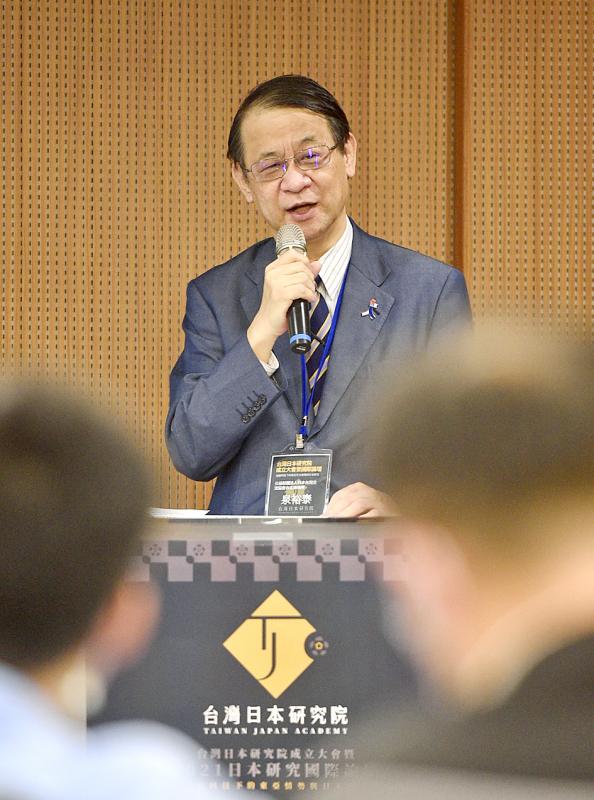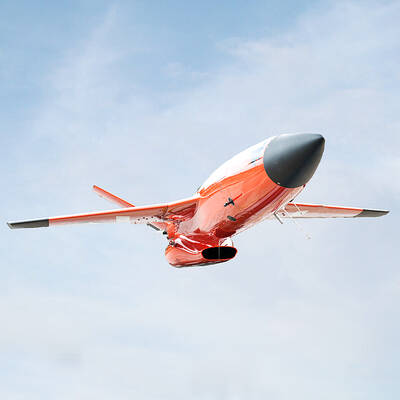Democratic Progressive Party Legislator Kuo Kuo-wen (郭國文) yesterday called on Japan to introduce a “Japanese version of the [US’] Taiwan Travel Act” to facilitate mutual visits by senior officials from both countries.
Kuo, who heads the legislature’s friendship association for East Asia, made the remark at the launch ceremony of the Taiwan Japan Academy at National Chengchi University in Taipei, attended by experts and academics urging stronger Taiwan-Japan ties.
Kuo said that the nation should support Taiwan-friendly Japanese lawmakers who are pushing for a mechanism that would allow official visits.

Photo: George Tsorng, Taipei Times
The friendship between Taiwan and Japan is strong, and the two peoples have come to each other’s aid in the wake of natural disasters, he said.
Former president Lee Teng-hui’s (李登輝) approach to the ties had led to structural changes, he said.
Kuo said he hopes that Japan’s ruling Liberal Democratic Party, which is traditionally Taiwan-friendly, would continue this path. Japanese Prime Minister Yoshihide Suga and members of his Cabinet have repeatedly emphasized the importance of Taiwan’s security, which suggests a shift in Tokyo’s approach to cross-strait affairs, he said.
When then-US president Bill Clinton in 1996 asked Tokyo to revise the US-Japan Treaty of Mutual Cooperation and Security, the discourse in Tokyo revolved around “the situation in the surrounding area,” he said.
That the Suga administration bolstered its geostrategic policy shows that a different school of thought now prevails in Japan’s national security establishment, he said.
Japan-Taiwan Exchange Association Representative Hiroyasu Izumi said Japan hopes that the academy would help bolster rapport and understanding between the two sides, adding that knowledge of Japan would become an asset in Taiwan.
The two countries’ relationship is based on mutual goodwill and sympathy, as demonstrated after the 2011 Tohoku earthquake and tsunami, as well as during the COVID-19 pandemic, he said.
The passing of an old generation of Japanese-speaking Taiwanese — such as Lee, who made great contributions to the bilateral relationship — has made the academy’s work more important than ever, he said.
Taiwan and Japan have technology advantages that could complement each other in ways that could contribute to world peace and prosperity, he added.

‘WIN-WIN’: The Philippines, and central and eastern European countries are important potential drone cooperation partners, Minister of Foreign Affairs Lin Chia-lung said Minister of Foreign Affairs Lin Chia-lung (林佳龍) in an interview published yesterday confirmed that there are joint ventures between Taiwan and Poland in the drone industry. Lin made the remark in an exclusive interview with the Chinese-language Liberty Times (the Taipei Times’ sister paper). The government-backed Taiwan Excellence Drone International Business Opportunities Alliance and the Polish Chamber of Unmanned Systems on Wednesday last week signed a memorandum of understanding in Poland to develop a “non-China” supply chain for drones and work together on key technologies. Asked if Taiwan prioritized Poland among central and eastern European countries in drone collaboration, Lin

The Chien Feng IV (勁蜂, Mighty Hornet) loitering munition is on track to enter flight tests next month in connection with potential adoption by Taiwanese and US armed forces, a government source said yesterday. The kamikaze drone, which boasts a range of 1,000km, debuted at the Taipei Aerospace and Defense Technology Exhibition in September, the official said on condition of anonymity. The Chungshan Institute of Science and Technology and US-based Kratos Defense jointly developed the platform by leveraging the engine and airframe of the latter’s MQM-178 Firejet target drone, they said. The uncrewed aerial vehicle is designed to utilize an artificial intelligence computer

Renewed border fighting between Thailand and Cambodia showed no signs of abating yesterday, leaving hundreds of thousands of displaced people in both countries living in strained conditions as more flooded into temporary shelters. Reporters on the Thai side of the border heard sounds of outgoing, indirect fire yesterday. About 400,000 people have been evacuated from affected areas in Thailand and about 700 schools closed while fighting was ongoing in four border provinces, said Thai Rear Admiral Surasant Kongsiri, a spokesman for the military. Cambodia evacuated more than 127,000 villagers and closed hundreds of schools, the Thai Ministry of Defense said. Thailand’s military announced that

CABINET APPROVAL: People seeking assisted reproduction must be assessed to determine whether they would be adequate parents, the planned changes say Proposed amendments to the Assisted Reproduction Act (人工生殖法) advanced yesterday by the Executive Yuan would grant married lesbian couples and single women access to legal assisted reproductive services. The proposed revisions are “based on the fundamental principle of respecting women’s reproductive autonomy,” Cabinet spokesperson Michelle Lee (李慧芝) quoted Vice Premier Cheng Li-chiun (鄭麗君), who presided over a Cabinet meeting earlier yesterday, as saying at the briefing. The draft amendment would be submitted to the legislature for review. The Ministry of Health and Welfare, which proposed the amendments, said that experts on children’s rights, gender equality, law and medicine attended cross-disciplinary meetings, adding that